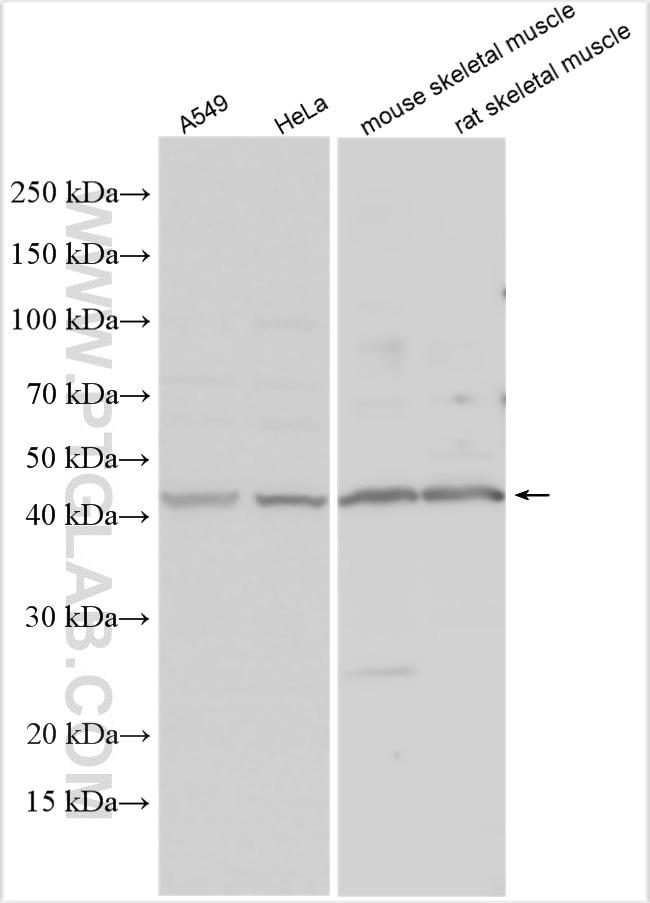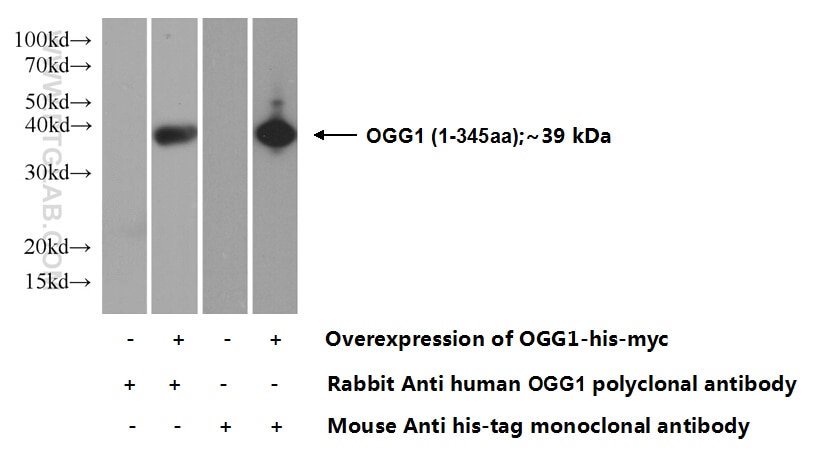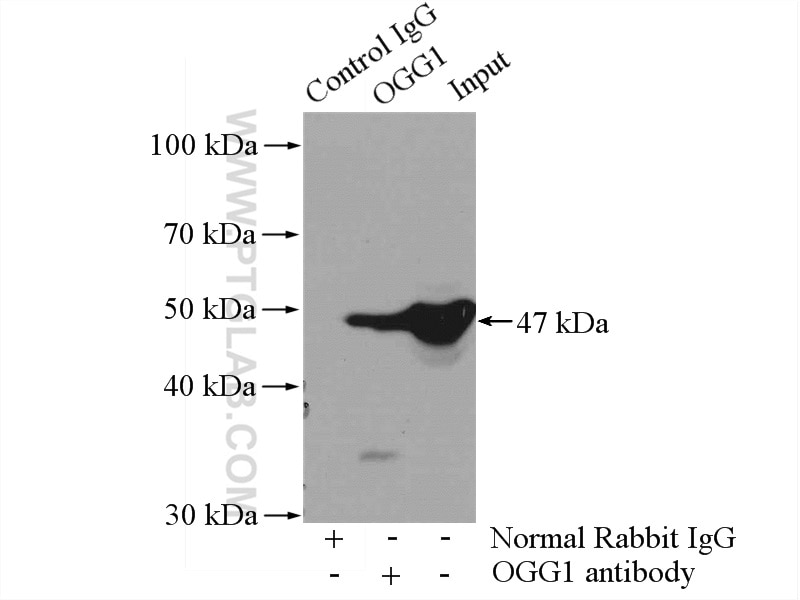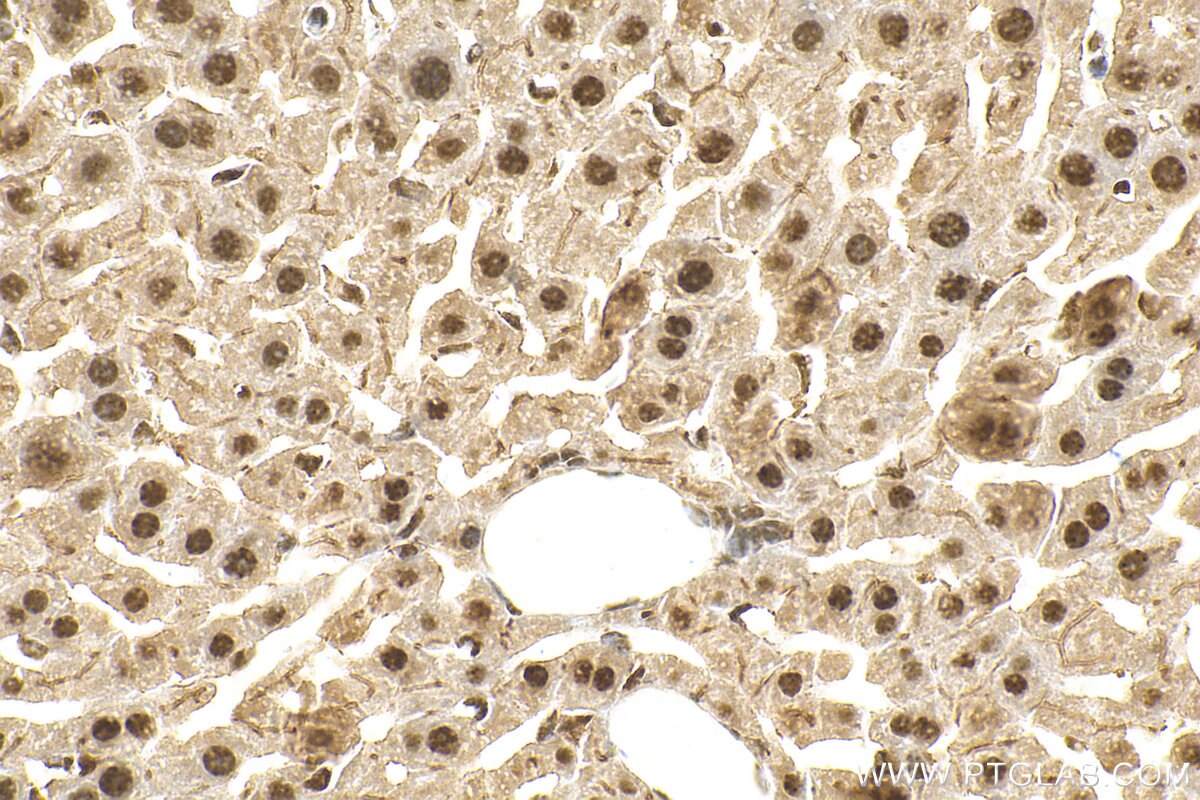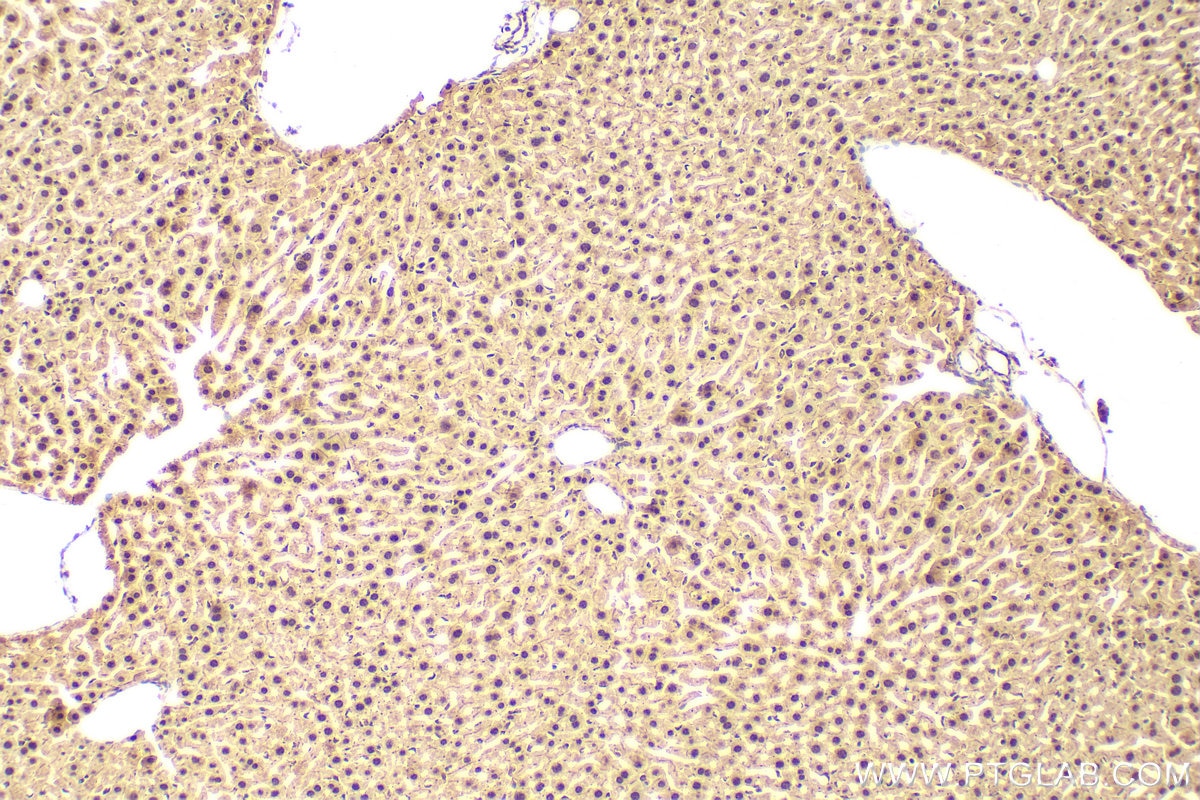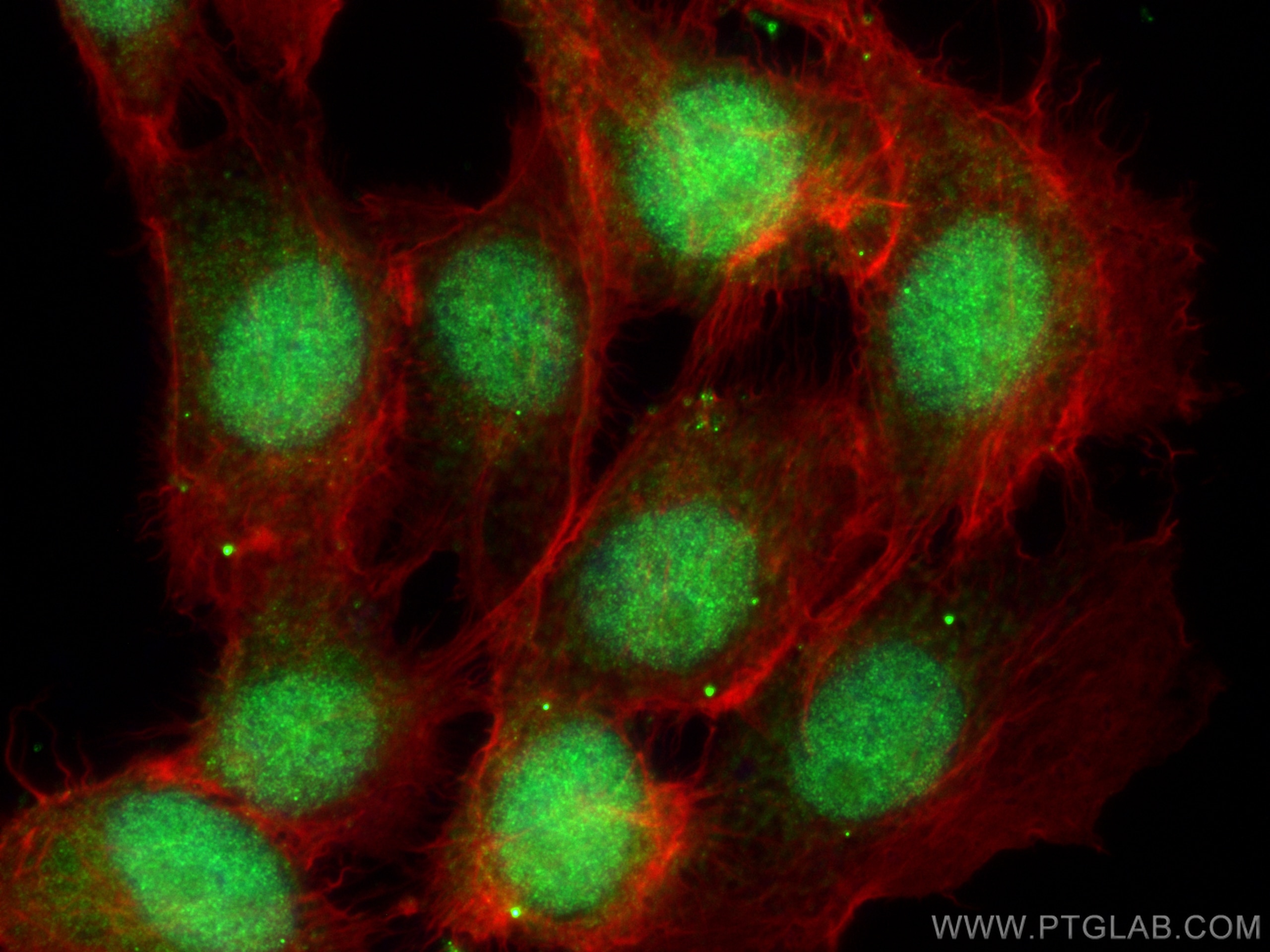Anticorps Polyclonal de lapin anti-OGG1
OGG1 Polyclonal Antibody for WB, IHC, IF/ICC, IP, ELISA
Hôte / Isotype
Lapin / IgG
Réactivité testée
Humain, rat, souris et plus (1)
Applications
WB, IHC, IF/ICC, IP, ELISA
Conjugaison
Non conjugué
N° de cat : 15125-1-AP
Synonymes
Galerie de données de validation
Applications testées
| Résultats positifs en WB | cellules A549, cellules HEK-293 transfectées, cellules HeLa, tissu de muscle squelettique de rat, tissu de muscle squelettique de souris |
| Résultats positifs en IP | tissu cardiaque de souris |
| Résultats positifs en IHC | tissu hépatique de souris, il est suggéré de démasquer l'antigène avec un tampon de TE buffer pH 9.0; (*) À défaut, 'le démasquage de l'antigène peut être 'effectué avec un tampon citrate pH 6,0. |
| Résultats positifs en IF/ICC | cellules A431, |
Dilution recommandée
| Application | Dilution |
|---|---|
| Western Blot (WB) | WB : 1:500-1:1000 |
| Immunoprécipitation (IP) | IP : 0.5-4.0 ug for 1.0-3.0 mg of total protein lysate |
| Immunohistochimie (IHC) | IHC : 1:50-1:500 |
| Immunofluorescence (IF)/ICC | IF/ICC : 1:200-1:800 |
| It is recommended that this reagent should be titrated in each testing system to obtain optimal results. | |
| Sample-dependent, check data in validation data gallery | |
Applications publiées
| WB | See 31 publications below |
| IHC | See 3 publications below |
| IF | See 3 publications below |
Informations sur le produit
15125-1-AP cible OGG1 dans les applications de WB, IHC, IF/ICC, IP, ELISA et montre une réactivité avec des échantillons Humain, rat, souris
| Réactivité | Humain, rat, souris |
| Réactivité citée | rat, Humain, porc, souris |
| Hôte / Isotype | Lapin / IgG |
| Clonalité | Polyclonal |
| Type | Anticorps |
| Immunogène | OGG1 Protéine recombinante Ag7204 |
| Nom complet | 8-oxoguanine DNA glycosylase |
| Masse moléculaire calculée | 22 kDa, 36-40 kDa, 45-57 kDa |
| Poids moléculaire observé | 36-40 kDa, 45-50 kDa |
| Numéro d’acquisition GenBank | BC000657 |
| Symbole du gène | OGG1 |
| Identification du gène (NCBI) | 4968 |
| Conjugaison | Non conjugué |
| Forme | Liquide |
| Méthode de purification | Purification par affinité contre l'antigène |
| Tampon de stockage | PBS with 0.02% sodium azide and 50% glycerol |
| Conditions de stockage | Stocker à -20°C. Stable pendant un an après l'expédition. L'aliquotage n'est pas nécessaire pour le stockage à -20oC Les 20ul contiennent 0,1% de BSA. |
Informations générales
The DNA damages induced by ROS contain base modification, base loss, and DNA single strand breaks, which are usually repaired by the base excision repair (BER) pathway in both prokaryotes and eukaryotes. OGG1 (The human 8-oxoguanine glycosylase 1) is the primary enzyme in BER pathway, responsible for the excision of 7, 8-dihydro-8-oxoguanine (8-oxoG), a mutagenic base by product that occurs as a result of exposure to reactive oxygen species. There's 8 isoforms of OGG1, with calculated MW 22 kDa, 36-40 kDa and 45-57 kDa. The difference among these isoforms is the C-terminal (317-345aa). Our OGG1 antibody detects all the isoforms. We always got the strongest 47 kDa corresponds to isoform Beta in our detection and some weaker bands (with long time exposure). The expression amount of Beta is higher than other isoforms from our data. This antibody has been cited in more than 4 publications, WB and IHC detection in mouse and human.
Protocole
| Product Specific Protocols | |
|---|---|
| WB protocol for OGG1 antibody 15125-1-AP | Download protocol |
| IHC protocol for OGG1 antibody 15125-1-AP | Download protocol |
| IF protocol for OGG1 antibody 15125-1-AP | Download protocol |
| IP protocol for OGG1 antibody 15125-1-AP | Download protocol |
| Standard Protocols | |
|---|---|
| Click here to view our Standard Protocols |
Publications
| Species | Application | Title |
|---|---|---|
Crit Care Recombinant ACE2 protein protects against acute lung injury induced by SARS-CoV-2 spike RBD protein. | ||
Nat Commun Cis- and trans-resveratrol have opposite effects on histone serine-ADP-ribosylation and tyrosine induced neurodegeneration. | ||
Redox Biol Oxidative damage to lung mitochondrial DNA is a key contributor to the development of chemical lung injury | ||
PLoS Genet Heterozygosity for a hypomorphic polβ mutation reduces the expansion frequency in a mouse model of the fragile x-related disorders. | ||
JHEP Rep TAK1 deficiency promotes liver injury and tumorigenesis via ferroptosis and macrophage cGAS-STING signalling | ||
Phytomedicine Nrf2-dependent hepatoprotective effect of ellagic acid in titanium dioxide nanoparticles-induced liver injury |
Avis
The reviews below have been submitted by verified Proteintech customers who received an incentive for providing their feedback.
FH Shubhangi (Verified Customer) (07-05-2024) | Excellent
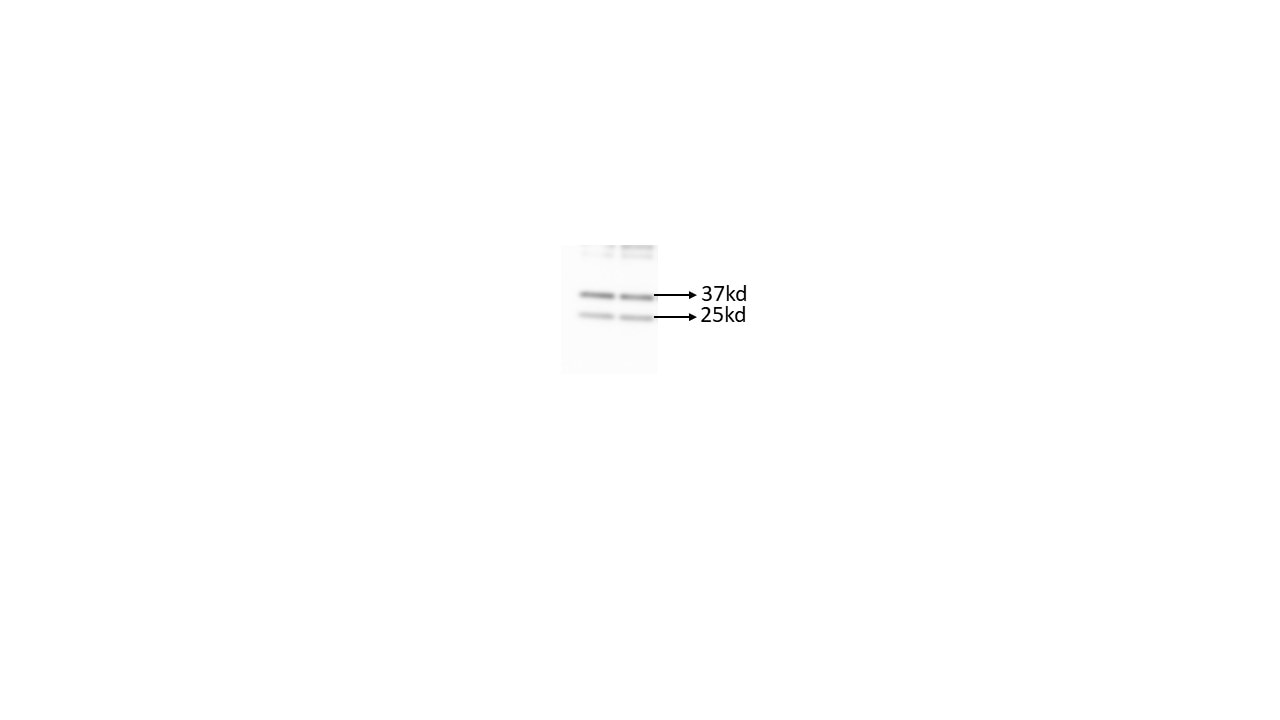 |
FH s (Verified Customer) (12-12-2022) | very good
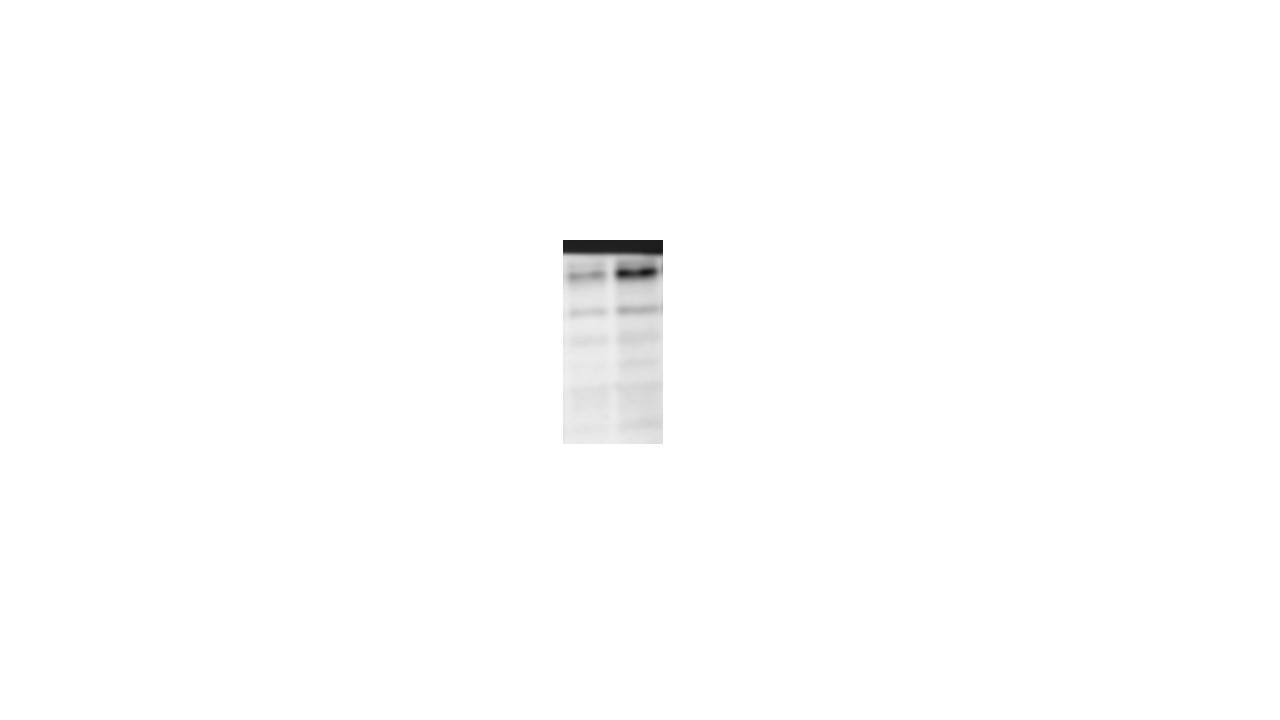 |
FH Ruyi (Verified Customer) (08-19-2019) | This antibody works well in my WB experiments.
|
